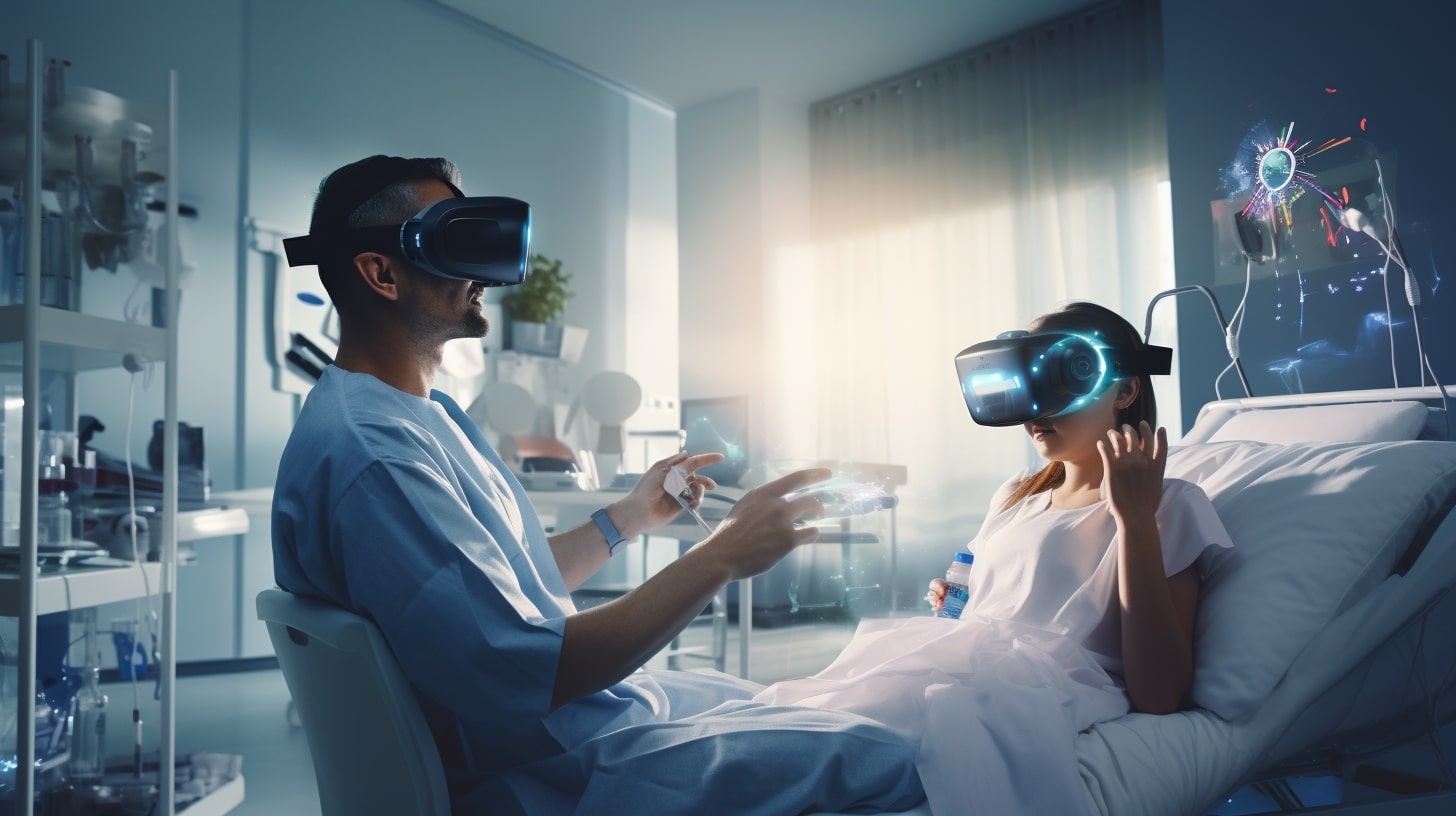The use of virtual reality in healthcare has spread to various domains, including diagnosis and treatment including surgery, counselling, and rehabilitation. Virtual reality creates the illusion of a three-dimensional environment.
When these environments adapt to the users’ movements, they make the users feel completely submerged in this technologically created reality. As a result, virtual reality company leverages the use of the potential for technical development to create a variety of realistic virtual worlds.
Patients who are unable to benefit from physical therapy can still move and exercise with the aid of virtual reality. This is mostly due to the fact that in a simulated setting, patients are totally absorbed in the realism that the virtual environment has created.
For this reason, unlike in physical therapy, their focus does not change to the experience of bodily pain.
As a result, patients in virtual environments are unaware of any physical pain. When there is no physical pain, patients are able to effectively accomplish their goals.
What is Virtual Rehabilitation?
Virtual Reality Rehabilitation is emerging as the need of the hour. This virtual form of rehabilitation has recently been demonstrated to be beneficial, and it is now being used for psychological and occupational therapies.
When receiving virtual reality therapy, patients are required to navigate a simulated digital interface and methodically do tasks that are precisely tailored to address a particular condition.
The technology setup is extensive and might include anything from a traditional desktop computer to a more modern virtual reality headset. This type of therapy is currently being explored by VR Healthcare Companies as an alternative to exposure therapy because it has been shown to be particularly successful in treating PTSD.

VR Rehabilitation Vs Conventional Therapy
A common consequence of neurological impairment is the impairment of lower limb motor skills. It causes a number of restrictions, like limited engagement in day-to-day activities. Regaining these motor skills requires a difficult and slow process that occasionally takes several months to complete.
The repeated nature of the traditional rehabilitation method has a detrimental effect on a patient’s drive to overcome obstacles. The objective data needed to effectively track the patient’s improvement is lacking from this conventional approach.
Under these conditions, virtual reality has become an important therapeutic tool in the field of rehabilitation, instead of traditional or conventional therapy. Virtual reality makes the rehabilitation process both more efficient and interesting.
It combines VR-based rehabilitation techniques to create a satisfying, productive, and inspiring experience that can encourage progress.
Advantages of VR Rehabilitation
When virtual reality is used in the rehabilitation process for patients with different diseases, it has a lot to offer. These advantages include lower medical costs for the healthcare system, better use of resources, flexibility, patient education and motivation, based on the patient’s history, as well as transparency in data storage and accessibility.
VR in Stroke Rehabilitation
Virtual reality has proven to be a useful technical development for stroke recovery. Because virtual reality may mimic real-world tasks, it helps people become more adept at taking care of themselves.
The virtual environment is provided via devices worn by the user or located within the virtual world. This immersive technology builds a sense of connection by layering the users’ experience. The goal of VR stroke rehabilitation is to cope with the symptoms and fallout after a stroke.

The most widely recognised benefit of virtual reality is its capacity to inspire perseverance in performing the necessary motions. Other benefits include the opportunity to practise independently, control over stimuli, and provide user feedback—all of which can be readily recorded due to the platform’s flexibility.
Additionally, it improves participation by enabling the patient to be in a secure setting like their own home.
VR in Pain Management and Reduction
Another area where virtual reality is making a big impact and may soon be able to eliminate patients’ dependency on drugs is pain management and reduction.
Virtual reality (VR) serves as the patient’s brain’s coping mechanism when they experience unpleasant feelings and aids in their relief. VR thereby promotes a quicker healing process.
VR in Cancer Rehabilitation
Virtual reality also helps cancer patients perform more effectively. These people can experience less pain and have better cognition, eyesight, and general wellness thanks to this technology.
Cancer remains one of the world’s most serious health issues. Chemotherapy is advised to reduce the likelihood of disease and completely remove the tumour mass.
Chemotherapy, however, is linked to a number of distressing symptoms, including depression, exhaustion, nausea, and vomiting. These symptoms make it harder for patients to follow the recommended regimen and lower their quality of life.
Therefore, immersive distraction interventions, like virtual reality therapy, are beneficial because they allow patients to focus on enjoyable stimuli rather than uncomfortable symptoms.

Virtual reality offers healing surroundings for cancer recovery. Chemotherapy can be more bearable and realistic goals can be achieved with the help of virtual reality and its distraction intervention feature.
Final Thoughts
Virtual reality rehabilitation is a form of therapy that can be both interactive and effective, which instils pleasure into the therapeutic process while encouraging and motivating patients to effectively confront their limitations.


